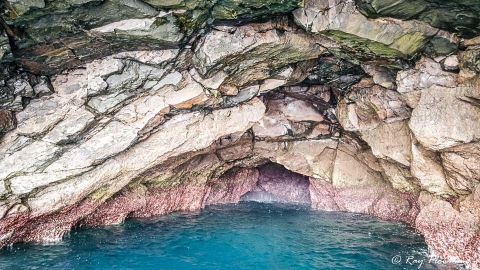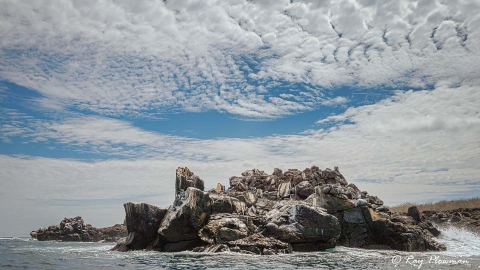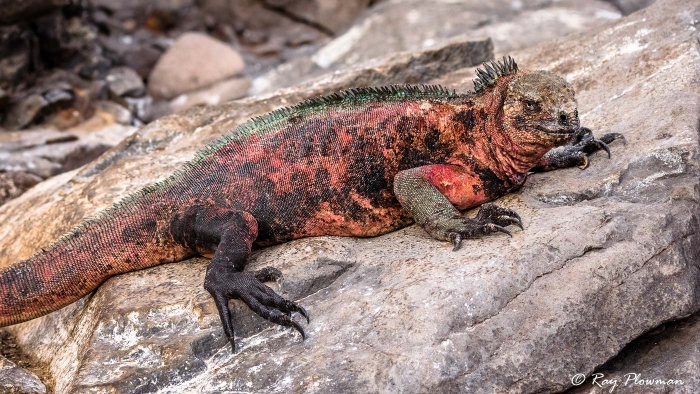Espanola – Gardner Bay and Punta Suarez
On day eleven, our itinerary included two sites on Espanola’s – Gardner Bay and Punta Suarez.
Espanola
Española (Hood) is the southernmost island in the archipelago, one of the oldest and smaller islands. It is a flat, barren, dry island but a haven for seabirds. Blue-footed boobies, Nazca boobies and waved albatrosses nest just inland. Furthermore, from April to December, all the world’s population of waved critically endangered albatrosses, a Galápagos endemic, nest.
Gardner Bay
We had anchored in the bay, midway between Gardner Island and Bahia Gardner, after an overnight voyage from San Cristóbal. After breakfast, we made a wet landing on the east coast of Española at Bahia Gardner’s northern beach for a walk.
Birds at Gardner Bay
[foogallery id=”17218″]
Gardner Bay Birds
Bahia Gardner is a white sandy beach is just under a kilometre to the rocky outcrop, but we did not venture beyond them. Only a few wildlife encounters, the first a Galápagos hawk was flying over our landing site. Then, a Galápagos dove, then the first of several sightings of Española Mockingbirds, an endemic island species. Last, a Galápagos flycatcher in the shrubs at the back of the beach. After some of the other sites, we visited the wildlife at Gardner Bay in January was disappointing.
Then back to the boat before embarking on a short mid-morning panga ride along the west coast of Isla Gardner.
West Coast of Gardner Island

Gardner Island Sea Cave

Rocky Outcrop at Gardner Island
The panga ride along Gardener Island’s shoreline was uninspiring, with no wildlife to photograph. But a sea cave and rocky outcrop with a cloudy sky at the north end of Gardner Island saved the day.
Punta Suarez
Whilst eating our lunch, we voyaged around the north coast of Española to anchor at Punta Suárez on the west coast of the island.

Galapagos Marine Iguana
The Galápagos Marine Iguana (Amblyrhynchus cristatus venustissimus) is an Española endemic subspecies also known as the Christmas Iguana.
Reptiles and Birds at Punta Suarez
[foogallery id=”17219″]
Punta Suarez Reptiles and Birds
In the late afternoon, we went ashore and then followed the clockwise trail for a two-hour walk. There was a small sandy beach at the landing-place where some colourful Galápagos marine iguanas were resting on the rocks. Also, Española (Hood) mockingbirds, an endemic subspecies, were foraging.
The trail passes through two seabird breeding colonies: The first was a Nazca booby colony, and the second was a waved albatross colony. However, most waved albatross birds were gone as their chicks had fledged. We did, however, encounter some stragglers photos of which feature in the gallery above. In contrast, the Nazca booby colony was full of nesting birds, so a behaviours photo essay displays the images below.
Furthermore, I photographed some Galápagos endemics: a hawk and a dove. Also, Española endemic species: A male and female lava lizard and a male cactus finch. And Española mockingbirds, including an individual displaying aggressive behaviour featured in the photo essay below.
Espanola Mockingbird Aggression Photo Essay
[foogallery id=”17220″]
Espanola Mockingbird Aggression
The photos show the aggressive behaviour of an Española mockingbird (Mimus macdonaldi) at Punta Suárez. I spotted an Española mockingbird squawking; I focused at four meters and took several shots. Española mockingbirds would appear to be the most aggressive when defending their territory. Unfortunately, there is not much information on mockingbird behaviour on the web (Ref 1 was the most useful). So, males lead when showing aggression, and females and other family members back the male up.
Nazca Booby Breeding Colony Photo Essay
[foogallery id=”4395″]
Nazca Booby Breeding Colony Photo Essay
Española was the first Nazca Booby breeding colony I visited in the Galápagos. The first image in the sequence shows an adult incubating an egg on a ground nest made from twigs and stone. Moreover, males and females share brooding and feeding duties. A couple of images feature an adult with its vulnerable chick and another adult feeding its chick.
The final sequence of five images shows a female with her chick. The male arrived back at the nest with a twig offering in its bill. Next, the male made a small stone offering, and the final image shows a bill-touching greeting. I assume this behaviour is pair-bonding reinforcement as it is part of the mating ritual.
References – Online Resources
1. Grant. N (1983). The breeding and behaviour of mockingbirds on the Galapagos. [Online] Available from Aqua Docs [Accessed 17-Sep-21].